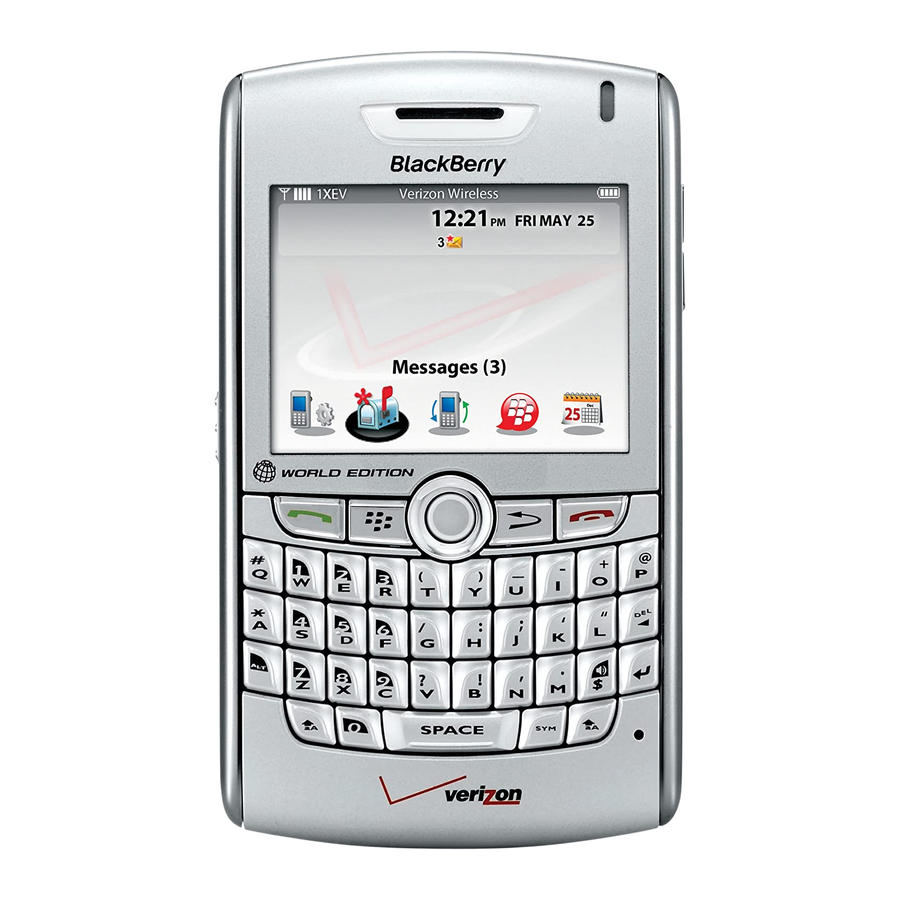- ページ 16
携帯電話 Blackberry 8830のPDF 安全性と製品情報をオンラインで閲覧またはダウンロードできます。Blackberry 8830 30 ページ。 Blackberry 8830 mobile phone getting started guide
Blackberry 8830 にも: 安全性と製品情報 (32 ページ), ヒントとコツ (4 ページ), スタートマニュアル (48 ページ), クイック・スタート・マニュアル (2 ページ), スタートマニュアル (16 ページ), サポートマニュアル (9 ページ)

Ministry of Internal Affairs and Communications (MIC), and Industry Canada (IC) guidelines
respecting safety levels of RF exposure for wireless devices, which in turn are consistent with
the following safety standards previously set by Canadian, U.S., and international standards
bodies:
• ANSI/IEEE C95.1, 1999, American National Standards Institute/Institute of Electrical
and Electronics Engineers Standard for Safety Levels with Respect to Human Exposure
to Radio Frequency Electromagnetic Fields, 3 kHz to 300 GHz
• National Council on Radiation Protection and Measurements (NCRP) Report 86, 1986,
Biological Effects and Exposure Criteria for Radiofrequency Electromagnetic Fields
• Health Canada, Safety Code 6, 1999, Limits of Human Exposure to Radiofrequency
Electromagnetic Fields in the Frequency Range from 3 kHz to 300 GHz
• EN 50360, 2001, Product standard to demonstrate the compliance of mobile phones
with the basic restrictions related to human exposure to electromagnetic fields (300 MHz
to 3 GHz)
• International Commission on Non-Ionizing Radiation Protection (ICNIRP), 1998,
Guidelines for Limiting Exposure to Time-Varying Electric, Magnetic, and
Electromagnetic fields (up to 300 GHz)
• Official Journal of the European Union (OJEU), 1999, Council Recommendation of 12 July
1999 on the limitation of exposure of the general public to electromagnetic fields (0 Hz
to 300 GHz)
• MIC, 2001, Article 14-2 of the Ordinance for Regulating Radio Equipment
To maintain compliance with FCC, IC, MIC, and EU RF exposure guidelines when you carry the
BlackBerry device on your body, use only accessories equipped with an integrated belt clip that
are supplied or approved by Research In Motion (RIM). Use of accessories that are not expressly
approved by RIM might violate FCC, IC, and EU RF exposure guidelines and might void any
14
